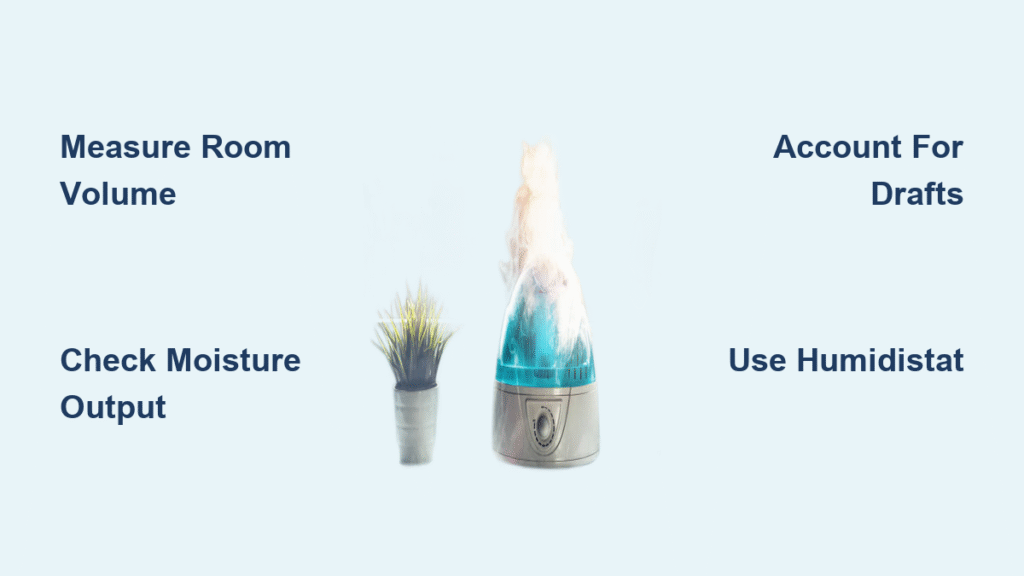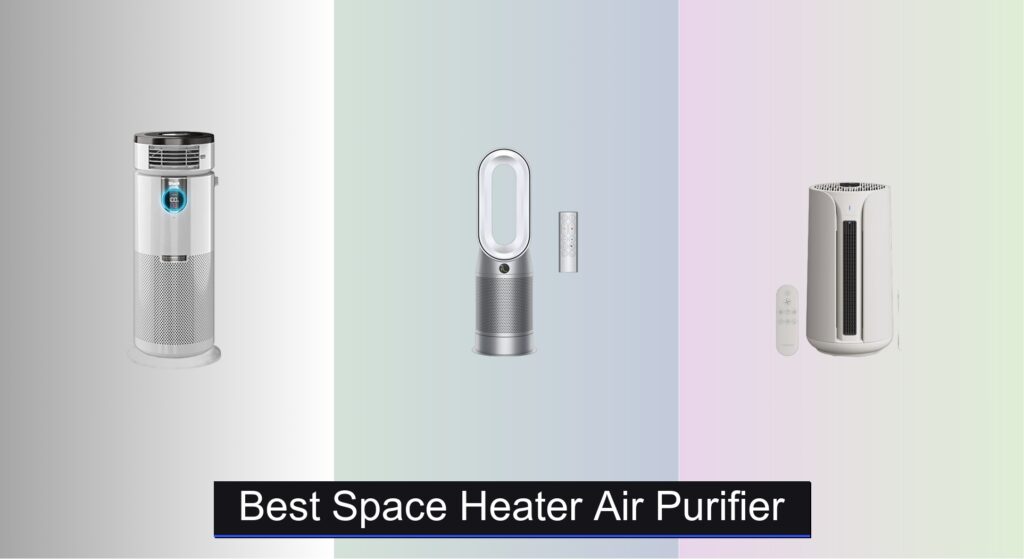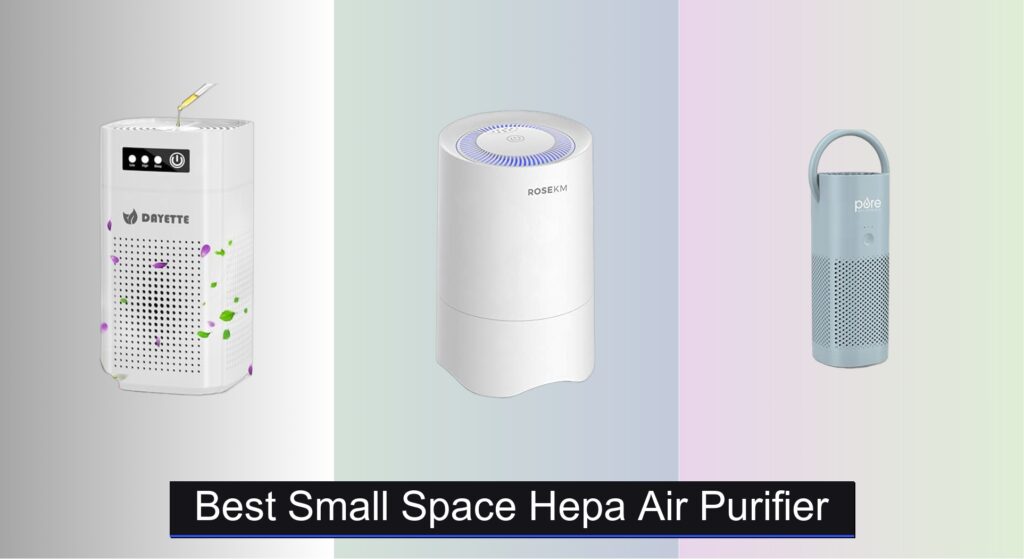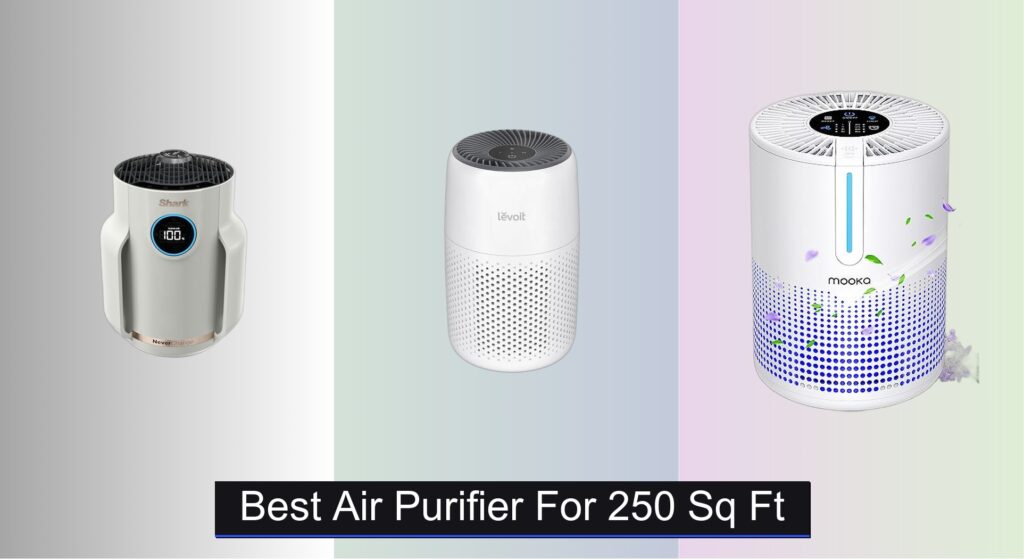Waking up with a scratchy throat, static shocks zapping your fingers, and wooden furniture cracking from dry air? You’re not alone—winter indoor humidity often plummets below 20%, turning your home into a desert. The right humidifier transforms this parched environment into a healthy 30-50% humidity sweet spot, but choosing the wrong size guarantees frustration. Too small, and you’ll still battle dry skin and nosebleeds; too large, and you’ll invite mold growth from excess moisture.
This guide cuts through confusing marketing labels to give you exact humidifier sizing based on your room’s real measurements—not vague “medium” or “large” claims. You’ll learn why square footage alone lies, how ceiling height changes everything, and why your drafty windows demand a bigger unit. Stop guessing and start breathing easy with science-backed sizing in 5 minutes flat.
Calculate Your Room’s True Size (Not Just Square Footage)
Square footage is the starting point, but standard sizing charts fail 80% of homes because they ignore critical factors like ceiling height and air leaks. Your actual humidifier need depends on the volume of air you’re trying to moisturize—not just floor space.
Measure Like a Pro: The 3-Step Volume Formula
- Basic calculation: Multiply room length × width (e.g., 12 ft × 15 ft = 180 sq ft bedroom)
- Adjust for high ceilings: Add 25% to your square footage for every foot above 8 ft (10 ft ceilings? Multiply by 1.25)
- Account for airflow: In open floor plans, measure all connected spaces—humidity flows freely through doorways and hallways
Hidden Factors That Force You to Size Up
- Drafty windows or poor insulation: Moisture escapes rapidly—add 15% to your calculated size
- Active fireplace use: Burning wood pulls humidity from the air—size up 20% during heating season
- Tight modern construction: Newer homes with vapor barriers retain moisture better—your need may be 25% lower than charts suggest
Pro Tip: Stand near windows on a cold morning. If you see condensation inside the glass, your home is “tight” and needs less humidification. No condensation? You’ve got air leaks demanding a larger unit.
Match Moisture Output to Your Exact Space (Forget Tank Size!)

Store labels like “medium” or “large” are meaningless without knowing daily moisture output—the only number that matters. Tank capacity (gallons) tells you refill frequency; output (pints/gallons per day) determines if it can actually humidify your space.
Portable Humidifier Sizing Cheat Sheet
| Your Room Size | Needed Output | What to Buy | Real-World Example |
|---|---|---|---|
| < 300 sq ft | 2-5 pints/day | 1-gallon ultrasonic | Bathroom or office: Raises humidity from 20% to 50% in 3 hours |
| 300-600 sq ft | 6-10 pints/day | 2-3 gallon evaporative | 12×15 ft bedroom: Maintains 40% RH at 25°F with one daily refill |
| 600-1,000 sq ft | 10-16 pints/day | 3-5 gallon console | Living room with vaulted ceilings: Prevents static shocks on carpet |
| 1,000-2,400+ sq ft | 16-32+ pints/day | 9-12 gallon evaporative | Open-plan loft: Covers 1,800 sq ft from central hallway location |
Critical Insight: A “large” 500 sq ft unit labeled for 600 sq ft often fails in drafty rooms. Always prioritize output specs over room-size labels on packaging.
Why Your Humidifier Fails: 2 Costly Sizing Mistakes
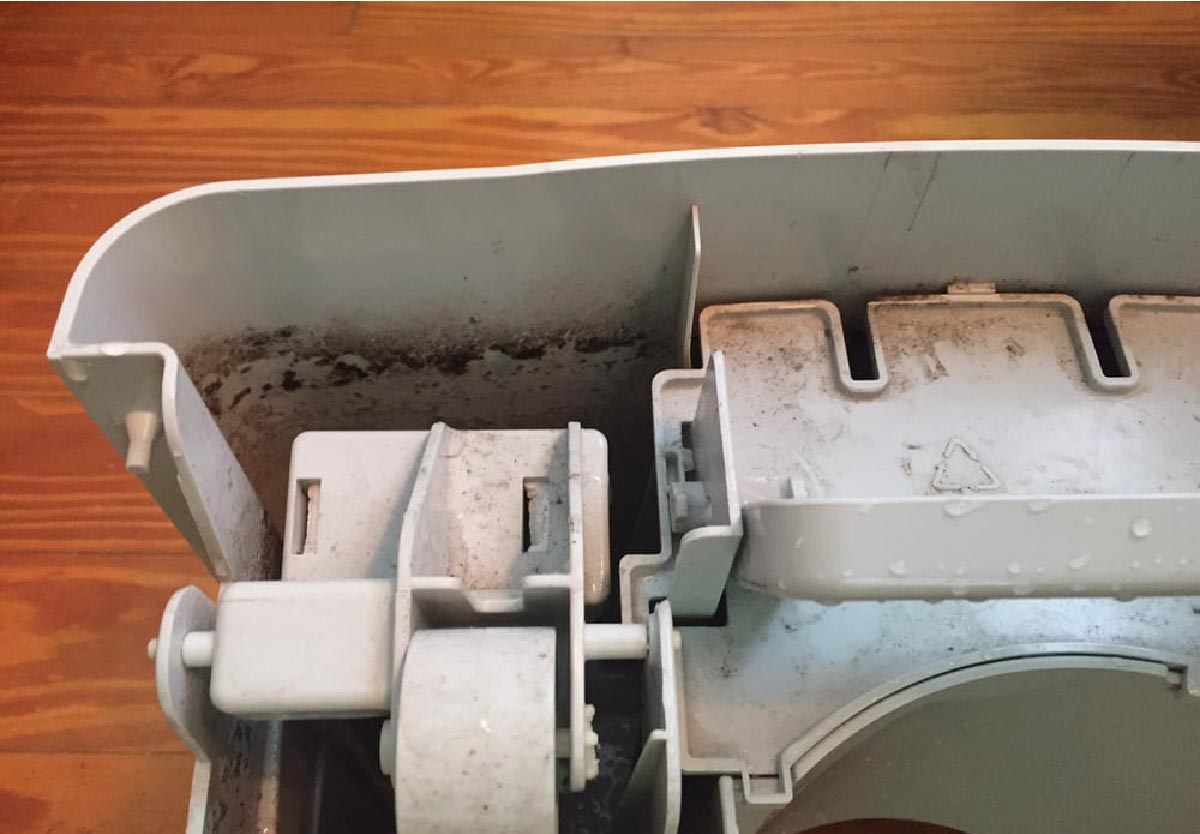
The “Bigger Is Better” Disaster
Oversized units create dangerous moisture overload within hours. You’ll see:
– Water droplets on windows causing rot in 2-3 weeks
– Musty closet smells from hidden mold growth above 50% humidity
– Dust mite explosions (they thrive above 50% RH)—triggering allergies
Fix it: If you’re between sizes, choose the smaller unit with a built-in humidistat. This auto-shutoff feature prevents over-humidification—making a 10-pint unit safe for 500 sq ft spaces.
The Undersized Struggle Cycle
Tiny units in large rooms waste your time and money:
– Refilling every 2 hours on max setting (like using a spray bottle to water a lawn)
– Never reaching 30% humidity even after 12 hours of runtime
– Premature motor burnout from non-stop operation
Real Example: A 5-pint unit in a 400 sq ft bedroom with 10 ft ceilings runs constantly but only hits 28% RH—leaving you with chapped lips and cracked guitar wood.
Ultrasonic vs. Evaporative: How Technology Changes Sizing Needs
Your humidifier type dramatically impacts real-world coverage. Don’t trust generic sizing charts—they assume all tech works equally.
Type-Specific Adjustments You Must Make
- Ultrasonic models: Deliver full rated output—size exactly to your room (e.g., 10-pint unit = 500 sq ft coverage)
- Evaporative units: Self-regulate based on humidity—size up 15% for drafty rooms (a 10-pint unit acts like 8.5 pints in leaky spaces)
- Warm-mist units: Smaller tanks limit coverage—best for ≤400 sq ft even if labeled “large”
- Whole-house systems: Match output to home tightness (see table below)
| Home Size | Tight Construction | Average Construction | Loose Construction |
|---|---|---|---|
| 1,500 sq ft | 3.2 gpd | 5.5 gpd | 7.0 gpd |
| 2,000 sq ft | 4.9 gpd | 8.0 gpd | 10.0 gpd |
Warning: Loose homes (common in older builds) need double the output of tight new constructions. Measure your air leaks before buying!
Your 4-Step Sizing Workflow (No Math Degree Needed)
1. Measure Correctly in 60 Seconds
Grab a tape measure:
– Calculate base square footage (length × width)
– Add 25% per foot above 8 ft ceilings
– Round up to nearest 50 sq ft (187 sq ft → 200 sq ft)
2. Audit Your Home’s “Humidity Leaks”
Walk through checking:
– ❌ Drafty windows? → Add 15% to size
– ❌ Active fireplace? → Add 20% during winter
– ✅ Modern vapor barrier? → Subtract 10%
– ❌ Open floor plan? → Measure entire connected area
3. Match to Output—Not Tank Size
Verify product specs show:
– Moisture output ≥ your adjusted room size
– Humidistat or multiple fan speeds (non-negotiable for accuracy)
– Auto-shutoff for safety
4. Cross-Check Real-World Performance
Use these benchmarks:
– 300 sq ft room: Needs 8-pint output to hit 40% RH in 4 hours
– 1,000 sq ft loft: Requires 20-pint unit for daily maintenance
– 2,000 sq ft home: Needs 10 gpd furnace humidifier or 12-gallon console
Whole-House Sizing Without Professional Help
Furnace humidifiers seem complex, but sizing follows the same principles—just scaled up. Skip the HVAC technician quote with this DIY method:
- Calculate your home’s effective square footage (total area minus closets/bathrooms)
- Determine construction tightness:
– Tight: New build with energy-efficient windows (2015+)
– Average: 1990s-2010s construction
– Loose: Pre-1980s with single-pane windows - Match to the gpd table above (e.g., 2,000 sq ft average home = 8.0 gpd unit)
Critical Reality Check: Bypass humidifiers require duct access and professional installation. For renters or DIYers, a 12-gallon console unit placed in a central hallway often covers 2,400 sq ft homes without ductwork—verified in Energy Star field tests.
The Perfect Size for 5 Common Spaces
Stop overcomplicating it—here’s your instant reference:
– Tiny bedroom (10×12 ft): 1-gallon ultrasonic (5-pint output)
– Master suite (14×18 ft): 3-gallon evaporative (10-pint output)
– Living room (15×20 ft): 4-gallon console (12-pint output)
– Open kitchen/dining (20×25 ft): 8-gallon evaporative (18-pint output)
– Entire 2,000 sq ft home: 10 gpd furnace unit or 12-gallon console in hallway
Final Size Decision: When to Size Up (Safely)
Only size up if your unit has these 3 features:
1. Built-in humidistat (auto-shutoff at 50% RH)
2. Multiple fan speeds (to reduce output in smaller rooms)
3. Easy water level adjustment
Better strategy: Buy for your largest room if moving the unit between spaces. A 3-gallon unit safely humidifies both a 400 sq ft bedroom (on low) and 800 sq ft living room (on high)—no guesswork needed.
The right humidifier should run quietly in the background, maintaining healthy 30-50% humidity without constant refills or mold scares. Measure your actual space, ignore misleading labels, and choose output over tank size. Your lungs—and wooden floors—will thank you before winter ends.

